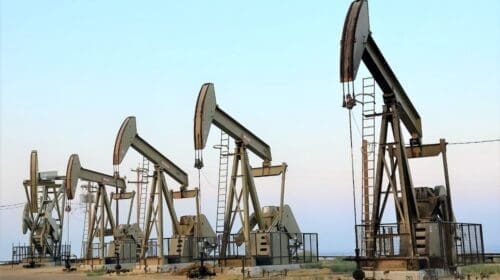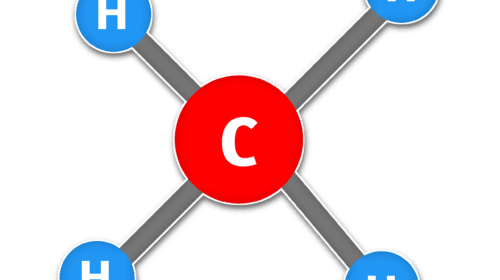If the past serves as an indicator, workplace safety has long been a focus in the oil and gas industry. Although some describe the quality of that attention as lacking, others search for and initiate directives to enhance safety cultures in the workplace. While multiple approaches have been evaluated to ensure success, there is growing recognition of the psychology-based approaches to safeguarding and maintaining workplace safety called human factors and human performance.
While some organizations attempt to obtain desired results with different tools, like safety acronyms that promote a specific message, others attempt to adopt new and cutting-edge technologies. Comparatively, one man has embarked on a different path from a methodology that originated post-WWII. He leads the efforts to modernize and transform safety approaches to ensuring the people in the workplace complete the day safely.
Dr. Marcin Nazaruk has worked in heavy manufacturing, power generation and, in the last 10 years, for bp and Baker Hughes as the Global Human Performance Leader and continues to inject innovative insights about human and organizational performance (HOP) throughout the oil and gas industry as an expert in the field and promotor of its abilities. A certified industrial psychologist with an applied PhD in human factors, and a list of qualifications including safety, business management, training design or systems thinking, he is the world’s only person leading four prestigious human factors working groups. Nazaruk leads the cause in educating the industry on how to achieve better safety and operational results with the use of practical tools based on modern industrial psychology.
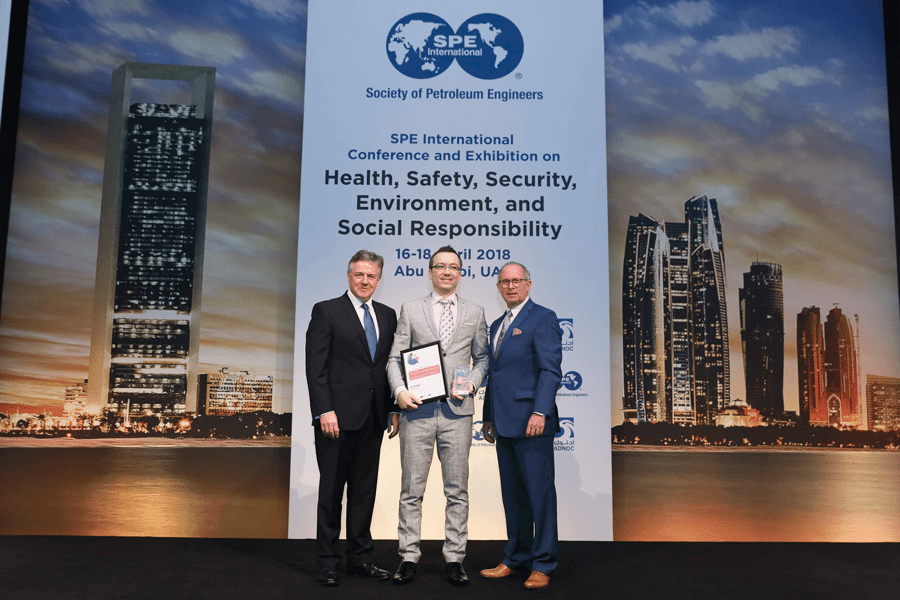
Defining the Human Factors and Human Performance
“Simply put, human performance is all the things that people do, while human factors are all the things that influence what people do,” says Nazaruk. “For example, how workers perform a heavy lift (human performance), will depend on many things (human factors), including the more obvious ones, such as their competency, visibility or equipment available, but also on less obvious things, such as information about the center of gravity, that should be provided by an engineer or the confusing design of crane controls. Human factors are also a discipline of science and practice that studies how these things increase the chance of error or non-compliance.”
According to Nazaruk, the human factors discipline is not new to the world of oil and gas. While difficult to introduce into the mainstream, its acceptance and the recognition of its effectiveness have accelerated over the past ten years, which Nazaruk credits to different factors.
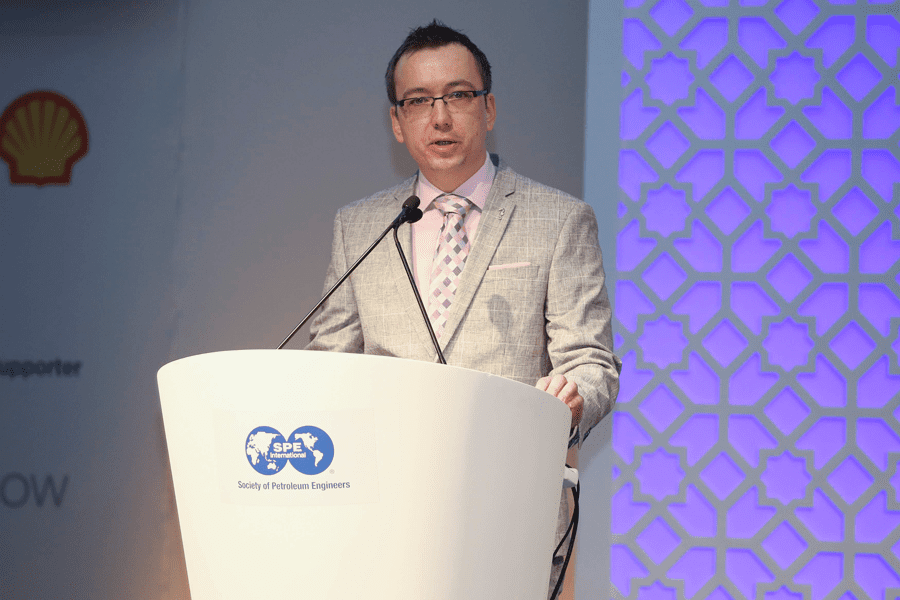
“The accelerated growth started with the major players of the industry investing in human performance expertise. It made its way into the industry bodies and the International Association of Oil and Gas Producers (IOGP) is now saying this is a topic of strategic importance.”
As an entity of expert advice, IOGP is the global voice of industry. With its promotion of human performance, Nazaruk expresses excitement and validation that the methodology not only works in the workplace safety application, but also encompasses the capability to enhance other areas of business such as quality or operations.
IOGP has agreed a set of common human performance (HP) principles that can be also referred to as HP philosophy:
- Error is normal
- Blame fixes nothing
- Context drives behavior
- Learning is vital
- How you respond matters
“The major players in the oil and gas industry have the capabilities and resources to adopt new methodologies, which leads to sharing information,” says Nazaruk. “It then becomes formalized in the industry and [is] now recognized as an expectation.”
People have a natural tendency to explain the behavior of others by referring to their personal characteristics, a psychological effect known as the fundamental attribution error.
“This creates a natural tendency of leaders to ask if an unwanted outcome occurred because of a specific person,” explains Nazaruk. “The natural thought process gravitates to pointing the finger.”
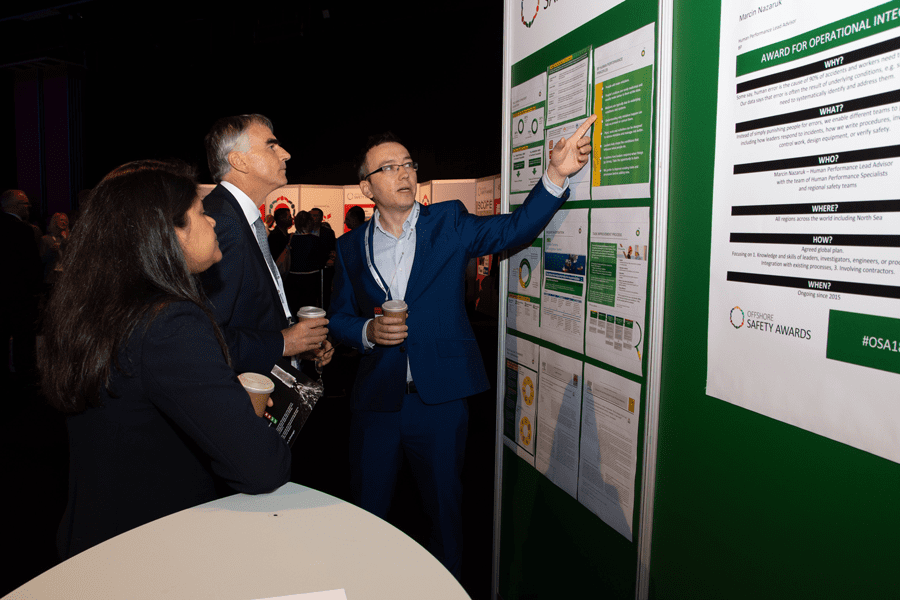
In contrast, human performance philosophy almost seems like an alien thought as it redirects the focus from the individual to the work environment and how the work is set up and arranged. Nazaruk indicates that the focus on blame comes at the expense of studying how the work environment contributes to the hazardous outcome which, in turn, makes companies simply ineffective in accident prevention.
The human performance tools and approaches provide a science-based alternative to an old school of thought. Nazaruk refers to the research that supports the notion that human performance reigns as significantly more effective in making changes in the workplace.
“It is much easier to change the aspects of the work environment than to change someone’s personality or how their brain works.”

Challenges in Introduction
As human performance continues to gain attention and acceptance within the oil and gas industry, the discipline is not part of mainstream health and safety management efforts. Companies tend to focus on the dominant approach and fail to recognize a more effective method. Nazaruk identifies a major challenge in introducing human performance into a safety culture and that is the difficulty of getting a large group of people to adopt a new vantage point in a coordinated manner.
“If you have one person that gets it and the rest do not, then they will lack the ability to communicate,” says Nazaruk. “Making such a transition is a multi-year effort but within a grasp for the majority of companies as proven by many examples in the industry.”
One of the challenges is that human performance philosophy encourages organizations to look in the mirror. The shift in thinking, however, is not impossible. Although it is not easy, Nazaruk has witnessed a transition in thought processes and belief systems throughout his career.
“Another big challenge is identifying how the organization as a whole contributes to the level of risk instead of attempting to pinpoint one individual and their behavior.”

Strategic Implementation
Although the results exist and human performance yields turnarounds of significant standings, breaking the barrier of acceptance remains challenging. As a result, Nazaruk refers to certain elements that enable implementation.
Before anyone even considers weighing the results of a human performance program, company leaders must first be educated. They must be aware of the human performance principles which emphasize that people will make mistakes, and that mistakes are typically due to underlying conditions. Blame fixes nothing and it matters how leaders respond when things go wrong.
The problem is, “Exposure to human performance concepts and tools does not occur through mainstream safety training and certification programs,” says Nazaruk.
Human performance programs do not simply overtake or replace current safety programs and business models. Instead, they are a support piece that works best when integrated into existing strategies and processes.
“It is quite an important effort to fit human performance concepts and tools into existing structures and business ecosystems,” says Nazaruk. “For example, integration of human performance with [an] accident investigation process may include updating the investigation policy, enhancing the training to build new mindsets and skills, or updating the templates to ensure that new insights are communicated consistently.”
One area growing in recognition is pro-active learning, also called “Learning from Normal Work.” The idea is that accidents are exceedingly rare events compared to all the work that did not result in a problem and that we can find and address accident precursors before they lead to an accident.
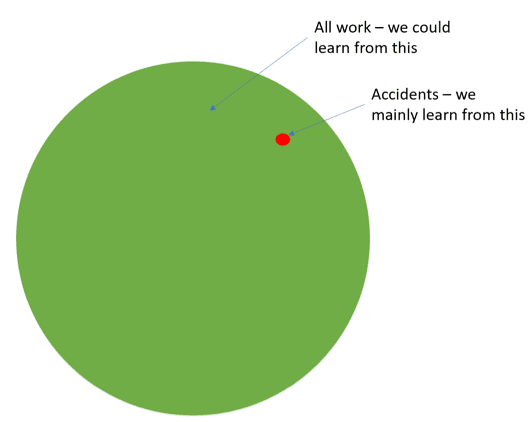 Dr. Nazaruk was the lead author of the 2022 IOGP Report 642 which provides practical guidance on how to learn from normal work.
Dr. Nazaruk was the lead author of the 2022 IOGP Report 642 which provides practical guidance on how to learn from normal work.

A webinar explaining the key principles can be found here.
Visible Results
As Nazaruk refers to multiple case studies and additional research, there is no denying that a human performance program, when instituted in its correct faculties, reigns successful. Quantitative results from various companies point to a 37 percent reduction in injury rate, over 20 percent reduction in severity potential and a 63 percent reduction in soft tissue injuries. While these extracted numbers from different scenarios represent definite strides of improvement, Nazaruk emphasizes the importance of the qualitative results.
“The questions that leaders ask change. They used to ask who did it and what consequences were levied. Now they ask what contributed to the incident, what was behind it, and how we can improve together.”
With qualitative results like these, Nazaruk realizes a shift from blame that fixes nothing to an assessment of the larger picture as human performance influences a change to a more caring evaluation, and the level of trust within the workforce increases. Employees find comfort in coming forward and are more willing to open up and tell the full story of what happened and what they need for future success.
“The value lies in practical application,” says Nazaruk.

The Road Ahead
According to Nazaruk, the human performance philosophy and its practical application will continue to infiltrate oil and gas leadership teams and will be implemented in everyday practice. The determining factors present themselves at various levels, and industry recognition continues to grow.
“The IOGP published a position paper this year stating that human performance will be a major theme and focus for the coming years,” says Nazaruk.
Displaying both validation and excitement, Nazaruk uses this recognition as further proof that the oil and gas industry is increasingly processing the use of human performance and how it can benefit business models. Those benefits have also spread across other operating modes.
The collaboration will drive the direction in which the human factor reach will take. Nazaruk has already witnessed human performance implementation become a contractual obligation. Launched in the U.K in 2021, SEQual was developed to facilitate better procurement practices. A new set of requirements related to the application of human performance has been integrated into the SEQual pre-qualification process.
“Industry bodies and regulators need to unite to align the message itself,” says Nazaruk. “Global leaders must get together and start identifying what it would mean if we embrace human performance and work together.”
While human performance displays excellent value and the road ahead proves robust, significant work must occur, and hurdles must be overcome. Education alone must be overhauled, and Nazaruk indicates the need to upgrade the curriculum of HSE certifications globally.

Rewards and Reach
Nazaruk continues to influence the industry and promote human performance wherever it can make an impact. His personal impact on the subject matter comes from multiple guidance documents, toolkits for practitioners, new competency frameworks for safety professionals, and scientific papers he has authored. His work has attracted many industry awards with the most recent being the SPE International HSE Award for outstanding contributions to the field.
As a principal contributing author to the IOGP Report 642 on learning from normal work, his experience and value alone can guide companies in navigating the waters of safety and optimization. He possesses the ability to teach industry leaders how to evaluate risk, prevent suffering and harm, and show the multiple facets in which this action can take place.
“I’d like to think my work has had an impact on the direction the industry is heading,” says Nazaruk. “I hope my work and materials will assist companies in advancing their way of thinking.”
Nazaruk identified multiple areas where he can influence and assist in implementing human performance. His grasp of the strategy allows him to retool the accident investigation process and improve how companies explain what happened in an incident. His research led to innovative approaches in risk assessment, insightful understanding of psychology behind procedural non-compliance or modern approaches to accountability. His work in this field enables him to command trust and successfully collaborate with others in introducing and implementing human performance concepts.
Nazaruk emphasizes his knowledge and expertise are not just confined to one industry. His work has reached and will continue to influence other sectors such as manufacturing, aviation, construction or engineering. His passion for human performance and determination in redefining how we as a people think far surpass the oil and gas industry.
“My goal is to modernize safety leadership and transform how leaders think,” says Nazaruk. “I want to show leaders how to see things they have not seen before. That will translate into better safety, increased quality, and operational efficiency.”
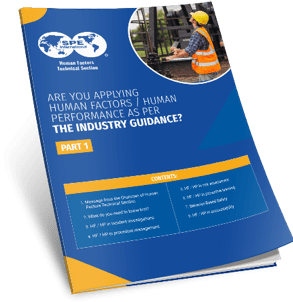 Bonus Material: If you would like to learn more about how to implement human performance in practice, according to the existing industry guidance, download this free guide Dr. Marcin Nazaruk wrote for the Society of Petroleum Engineers (SPE) Human Factors Technical Section. It covers assorted topics including HP in accident investigations, procedure management, risk assessment, initiative-taking learning, behavioral safety and accountability.
Bonus Material: If you would like to learn more about how to implement human performance in practice, according to the existing industry guidance, download this free guide Dr. Marcin Nazaruk wrote for the Society of Petroleum Engineers (SPE) Human Factors Technical Section. It covers assorted topics including HP in accident investigations, procedure management, risk assessment, initiative-taking learning, behavioral safety and accountability.
Nick Vaccaro is a freelance writer and photographer. In addition to providing technical writing services, he is an HSE consultant in the oil and gas industry with twelve years of experience. Vaccaro also contributes to SHALE Oil and Gas Business Magazine, American Oil and Gas Investor, Oil and Gas Investor, Energies Magazine and Louisiana Sportsman Magazine. He has a BA in photojournalism from Loyola University and resides in the New Orleans area. Vaccaro can be reached at 985-966-0957 or nav@vaccarogroupllc.com.
Oil and gas operations are commonly found in remote locations far from company headquarters. Now, it's possible to monitor pump operations, collate and analyze seismic data, and track employees around the world from almost anywhere. Whether employees are in the office or in the field, the internet and related applications enable a greater multidirectional flow of information – and control – than ever before.






